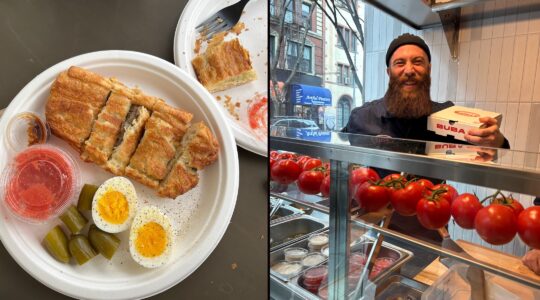Sometime in the early morning hours of Oct. 19, the temperature on the farm dipped down to 30 degrees: first frost. It was a light one. The mercury fell barely below freezing and did not stay there for very long, but it was enough. By the time I arrived at the farm, the eggplant looked like it had been drenched in volcanic ash, and the pepper leaves were hanging limp on the bush.
Farmers don’t typically celebrate the death of their crops, but I’ve been lusting after this moment for months, dreaming of the day when nature starts to put on the brakes and my time isn’t consumed by a relentless battle against weeds fought under an oppressive sun. Frost is the inflection point between the growing season and whatever comes after. And for me, I hope what comes after involves lots of sleeping in.

Lettuce heads sizing up at Root Down Farm in Connecticut. (Ben Harris)
As the days have grown colder, the only thing dropping faster than my workload is my appetite for it. It’s a quirk of my psychology I’m sure. But even though the workdays are starting later and ending earlier, even though the planting and tilling is done and only the harvesting remains, even though the onerous hands-and-knees weeding of high summer is over and the weather is golden and crisp, I find myself having to fight harder than ever to get up off my butt. I keep telling people that with just three weeks left in the CSA, we’re going to limp to the finish. And I mean it.
My fatigue is bone-deep. And it’s not just a physical exhaustion either, but a mental one. I just don’t want to harvest any more kale, or plunge my hands into icy water to wash the lettuce, or pile up the CSA boxes on the truck and haul them away. I’m over it.

Preparing for fall garlic planting at Root Down Farm in Connecticut. (Ben Harris)
If all this is making you wonder whether I’m a one-season farmer, don’t worry. The feeling is familiar. It happens every fall. After a nice winter hibernation, fueled by some bourbon and butternut squash soup, I’m always ready to climb back on that tractor come springtime. In many ways, it’s the license to winter laziness that drives me through those dog days.
Six months of hard labor is made tolerable — actually, it might even be made sweeter — by the prospect of a winter spent mostly on the couch. But for another three weeks, I’m limping.
Veteran JTA journalist Ben Harris is chronicling his new life as a Connecticut farmer. Read more of his weekly dispatches here.
*****
From the annals of Jewish farming: In 1980, JTA reported on the first decade of an experiment to grow greenhouse tomato in Israel’s Negev Desert.
JTA has documented Jewish history in real-time for over a century. Keep our journalism strong by joining us in supporting independent, award-winning reporting.





